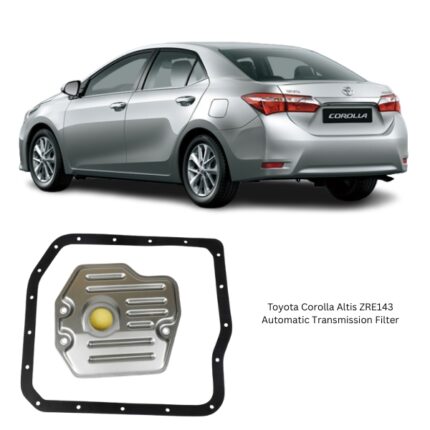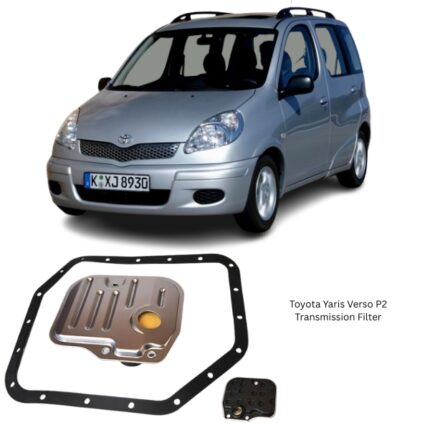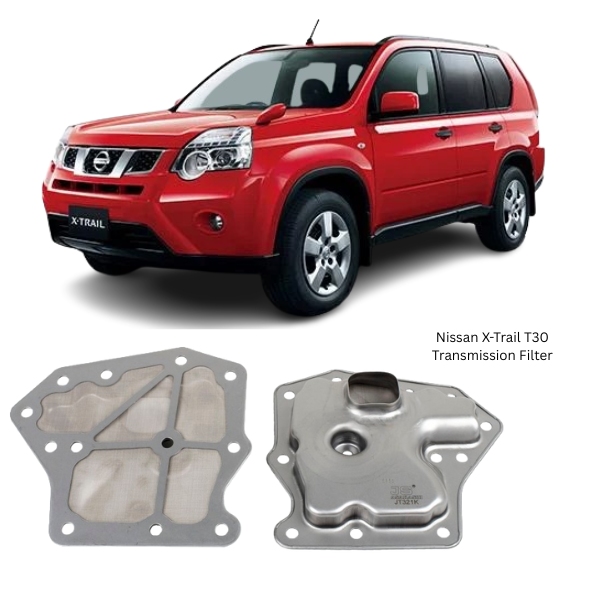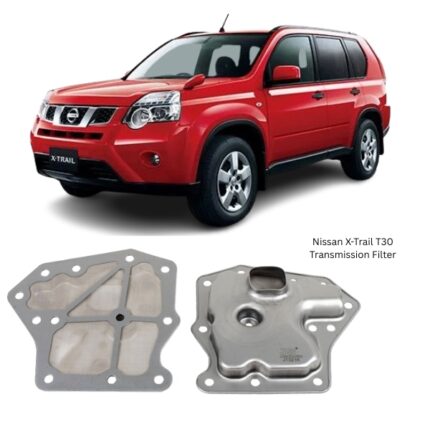Get Nissan X-Trail T30 Transmission Filter JT321K in Kenya
A Transmission Filter is a vital component within an automatic transmission system, responsible for ensuring the longevity and efficient operation of the transmission by maintaining clean transmission fluid. It serves as the first line of defense against contaminants such as metal particles, friction material, and sludge, which are naturally generated through internal wear or external debris.
In any automatic transmission system, maintaining optimal fluid cleanliness is not a luxury—it’s a necessity. Modern transmissions rely on hydraulic pressure, precision timing, and clean fluid to control gear shifts, lubrication, and cooling. A properly functioning transmission filter preserves these functions by trapping harmful particles before they circulate through the delicate valve body, solenoids, and internal gear systems.
Key Functions of a Transmission Filter
The primary role of a transmission filter is to protect the internal transmission components by removing contaminants from the transmission fluid. Its key functions include:
-
Filtration of Contaminants
The filter traps abrasive particles such as clutch material, metal filings, gasket fragments, and dust, preventing them from entering the hydraulic system. -
Preservation of Hydraulic Pressure
Clean fluid maintains accurate and responsive hydraulic pressure, which is essential for shifting gears smoothly and efficiently. -
Support for Cooling Efficiency
Contaminated fluid retains heat, while clean fluid dissipates heat more effectively, reducing the risk of overheating and thermal breakdown. -
Prolonged Transmission Life
A clean fluid circuit results in less wear and tear on valves, seals, and friction surfaces, extending the overall life of the transmission.
Construction and Design Features
Transmission filters are engineered for durability, precision filtration, and compatibility with specific transmission systems. The typical components of a transmission filter include:
-
Filter Media
The heart of the filter, usually made from cellulose, synthetic fibers, or a blend. It captures and holds contaminants while allowing fluid to pass freely. The filtration rating determines the size of particles it can effectively trap—usually down to a few microns. -
Filter Housing
Constructed from steel or high-temperature polymer, the housing provides a rigid structure to withstand high pressure and thermal stress. -
Sealing Gasket or O-Ring
A rubber or composite seal ensures that unfiltered fluid cannot bypass the filter, forcing all fluid through the media. Proper sealing is critical to maintain system pressure. -
Pick-Up Tube or Inlet Port
Allows fluid from the pan to enter the filter. Its design affects the flow rate and helps prevent cavitation or air ingestion into the pump. -
Magnet Compatibility
Some filters are paired with magnets inside the transmission pan to capture ferrous materials, offering dual-stage filtration (magnetic + mechanical).
Some designs are internal cartridge types, while others are inline or spin-on filters, depending on the transmission layout. Regardless of form, the transmission filter must endure high flow rates, sustained pressure, and elevated temperatures without degradation.
Why the Transmission Filter is Critical
Automatic transmissions operate in a closed hydraulic system. Over time, components like clutch packs, bands, bearings, and gears shed tiny particles as they wear. Even with the most advanced synthetic fluids, debris accumulation is inevitable.
The transmission filter:
-
Prevents Solenoid and Valve Clogging
Solenoids and valves inside the valve body have tight tolerances. Even small particles can cause sticking, delayed shifts, or complete failure. -
Reduces Internal Friction and Wear
Contaminant-free fluid ensures smooth lubrication, lowering internal wear and reducing heat generation. -
Prevents Transmission Overheating
Clogged filters reduce fluid circulation and cooling capacity, leading to temperature spikes that can damage seals and degrade fluid quality. -
Improves Shifting Quality
Smooth hydraulic pressure transitions enable consistent and seamless gear engagement.
By protecting the transmission’s most sensitive components, the filter plays a direct role in preventing failure and expensive repairs.
Symptoms of a Clogged or Failing Transmission Filter
Over time, transmission filters become saturated with debris and lose their filtering capacity. A neglected or failed transmission filter can cause numerous drivability issues, including:
-
Sluggish or Delayed Gear Engagement
Indicates fluid is not flowing properly through the system due to blockage. -
Transmission Slipping
Dirty fluid or low pressure from a clogged filter can cause gears to disengage during acceleration. -
Noisy Operation
Whining or buzzing noises often result from cavitation in the pump caused by restricted fluid flow. -
Transmission Overheating
Impeded flow reduces cooling performance, causing the system to run hotter than normal. -
Burnt or Darkened Fluid
Discolored fluid with a burnt smell suggests heat damage, which often correlates with poor filtration. -
Check Engine or Transmission Light
Modern vehicles detect transmission anomalies and may trigger warning lights due to hydraulic inconsistencies or solenoid malfunctions.
Timely filter replacement prevents these issues and supports uninterrupted operation.
Installation Guidelines
Replacing the transmission filter should be part of a routine transmission service, which includes changing the fluid and inspecting the system. The general procedure includes:
-
Raise and Support the Vehicle Safely
Ensure full access to the transmission pan. -
Drain the Fluid
Use a drain plug if equipped or carefully loosen pan bolts to release fluid. -
Remove the Transmission Pan
Clean the pan and inspect for debris. Look for metal shavings or clutch dust, which may indicate wear. -
Remove the Old Filter
Detach the filter from the valve body. Some are secured with bolts; others are simply pushed into place. -
Install the New Filter
Fit the replacement filter using a new seal or O-ring. Confirm proper seating to prevent bypass or leaks. -
Install a New Gasket and Reattach the Pan
Use a new gasket and torque the bolts evenly in a crisscross pattern. -
Refill the Transmission with Fluid
Add the correct type and volume of fluid according to manufacturer recommendations. -
Start the Engine and Cycle Through Gears
Allow the fluid to circulate and top off to the proper level after warm-up.
Proper installation ensures efficient operation and prevents future leaks or shifting issues.
Maintenance Tips for Transmission Filter Longevity
To ensure maximum transmission life and filter effectiveness, follow these maintenance practices:
-
Replace Filter with Every Fluid Change
This is typically every 40,000–80,000 kilometers depending on usage and fluid type. -
Use Only Compatible Transmission Fluid
Incorrect fluids can affect filter integrity and transmission function. -
Check Fluid Level and Color Regularly
Catch early signs of contamination or overheating before major issues develop. -
Monitor Shifting Behavior
Hesitation, slipping, or noise during shifting often indicate the need for service. -
Avoid Aggressive Driving on Cold Starts
Give the transmission time to warm up to reduce internal stress on components and fluid.
Follow us on Facebook for more parts.





Reviews
Clear filtersThere are no reviews yet.